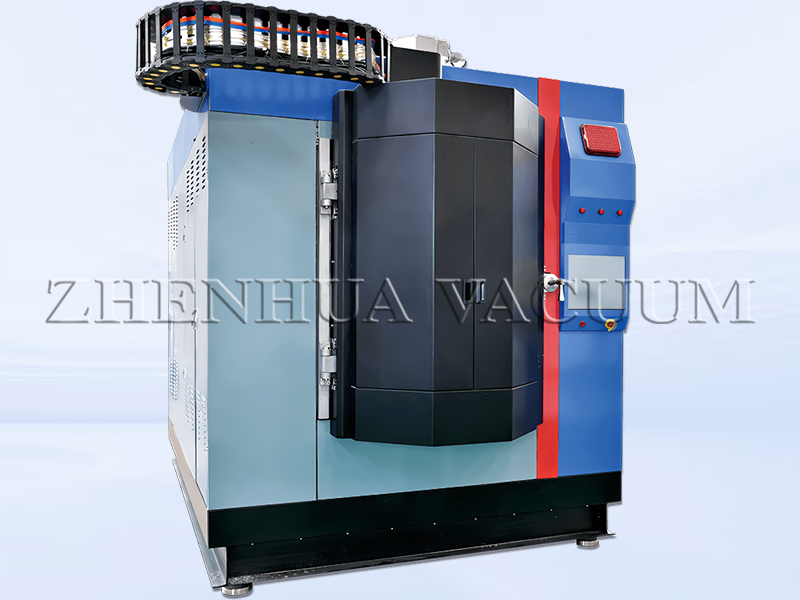As modern manufacturing continues to demand higher performance from components, especially those operating under extreme conditions such as high temperatures, high pressure, and strong friction, coating technology has become increasingly crucial. The application of hard coatings plays a key role in enhancing tool durability, machining precision, and overall product performance. PVD (Physical Vapor Deposition) surface treatment technology is at the forefront of innovation in this field, driving advancements in coating technology.
The PVD process involves using physical methods to transform coating materials from a solid or liquid state into a gaseous state, then depositing them onto the substrate surface through vapor deposition to form a uniform, hard, and durable coating. Compared with traditional chemical vapor deposition (CVD), the primary advantages of PVD lie in its ability to deposit coatings at lower temperatures, precisely control coating thickness and composition, and its environmentally friendly and energy-efficient nature.
No.2 Advantages of PVD in Hard Coatings
Due to its unique advantages, PVD technology is widely recognized in the application of hard coatings, particularly in areas requiring high hardness, excellent wear resistance, and superior corrosion resistance. The key advantages of the PVD process include:
1. Ultra-high Hardness and Wear Resistance
PVD hard coatings significantly enhance component hardness. By depositing materials such as TiN (Titanium Nitride), TiAlN (Titanium Aluminum Nitride), and CrN (Chromium Nitride), the hardness of the coating can reach 25GPa–63GPa or even higher. These hard coatings effectively improve wear resistance, reduce surface abrasion, increase oxidation resistance, and extend the service life of tools, molds, and other components.
2. Excellent High-Temperature Resistance
PVD coatings exhibit outstanding high-temperature resistance, making them ideal for components subjected to extreme temperatures and high friction or chemical corrosion. For instance, TiAlN coatings not only provide exceptional hardness but also maintain structural stability at elevated temperatures, making them widely used in cutting tools and molds for high-temperature machining applications.
3. Low Friction Coefficient for Improved Machining Efficiency
PVD coatings help achieve ultra-low friction coefficients, reducing material friction and wear, which enhances machining efficiency and surface quality. This is particularly beneficial for precision machining and high-speed cutting processes.
4. Environmentally Friendly and Highly Efficient
Compared with traditional coating techniques, the PVD process does not require large amounts of harmful chemicals, making it an environmentally friendly technology. Additionally, PVD coating equipment operates at high efficiency, enabling rapid deposition to meet large-scale production demands.
No.3 Application Fields of PVD Hard Coating
PVD Hard Coating machines for hard coatings are widely used in industries that require superior surface performance. Some key application areas include:
1. Cutting Tools and Molds
In tool and mold manufacturing, especially for cutting tools exposed to high temperatures and friction, PVD coatings significantly enhance wear resistance, corrosion resistance, and hardness. TiN coatings are commonly used in turning tools, milling cutters, and drills, while TiAlN coatings are extensively applied in high-speed cutting applications, greatly improving tool cutting efficiency and service life.
2. Automotive Components
For automotive engine components such as cylinders, pistons, and valves, PVD hard coatings offer excellent high-temperature resistance and wear resistance, effectively reducing friction, extending component lifespan, and enhancing overall vehicle performance.
4. Introduction of Zhenhua FMA0605 PVD Hard Coating Equipment
Equipment Advantages
Efficient filtration of arc macro-particles; Ta-C coatings offer both high efficiency and superior performance.
Achieves ultra-high hardness, high-temperature-resistant superhard coatings, low friction coefficient, and excellent corrosion resistance. Average hardness reaches 25GPa–63GPa.
The cathode adopts a dual-drive technology combining a front-positioned coil and permanent magnet stacking, working alongside an ion etching system and a three-dimensional multi-angle fixture to achieve efficient deposition.
Equipped with a large-diameter cathodic arc, which ensures excellent cooling properties under high current conditions. The arc spot movement speed is fast, ionization rate is high, and deposition rate is rapid. This enables the deposition of denser and smoother coatings with superior oxidation resistance and high-temperature performance.
Application Scope:
The equipment can deposit AlTiN, AlCrN, TiCrAlN, TiAlSiN, CrN, and other high-temperature-resistant superhard coatings, which have been widely applied in molds, cutting tools, punches, automotive components, pistons, and other products.
— This article is released by PVD hard coating equipment Zhenhua Vacuum
Post time: Feb-20-2025


